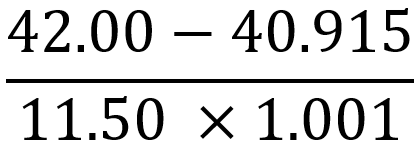In chemistry, significant figures play a crucial role in ensuring that calculations reflect the precision of the measurements involved. When performing multiplication or division, the final result must contain the same number of significant figures as the measurement with the least significant figures. This principle ensures that the precision of the least accurate measurement dictates the precision of the final answer.
To illustrate this, consider the multiplication of three values: 3.16, 0.003027, and \(5.7 \times 10^{-3}\). First, we determine the number of significant figures in each value:
- For 3.16, the first non-zero digit is 3, and counting from there gives us 3 significant figures.
- For 0.003027, the first non-zero digit is 3, leading to 4 significant figures.
- For \(5.7 \times 10^{-3}\), the coefficient is 5. Counting from the first non-zero digit gives us 2 significant figures.
With these counts, we see that the least number of significant figures among the values is 2. Therefore, our final answer must also be expressed with 2 significant figures.
After performing the multiplication, we initially obtain \(5.4522324 \times 10^{-5}\). To round this to 2 significant figures, we look at the first two digits, which are 5 and 4. The next digit is 2, which means we do not round up. Thus, the final answer is \(5.5 \times 10^{-5}\).
This example highlights the importance of significant figures in multiplication and division. The next step in understanding significant figures involves addition and subtraction, where different rules apply. In those operations, the final answer is determined by the least precise decimal place rather than the number of significant figures.


